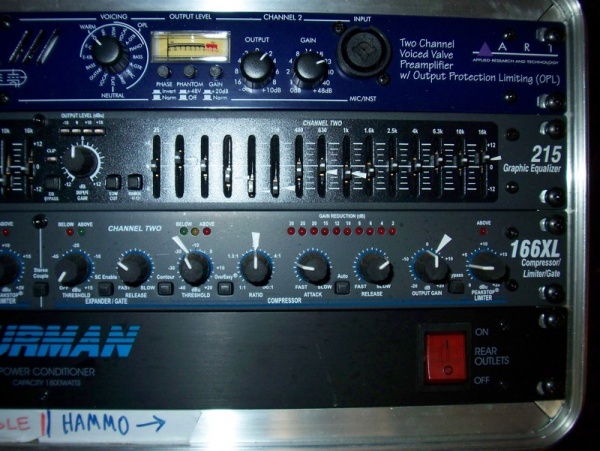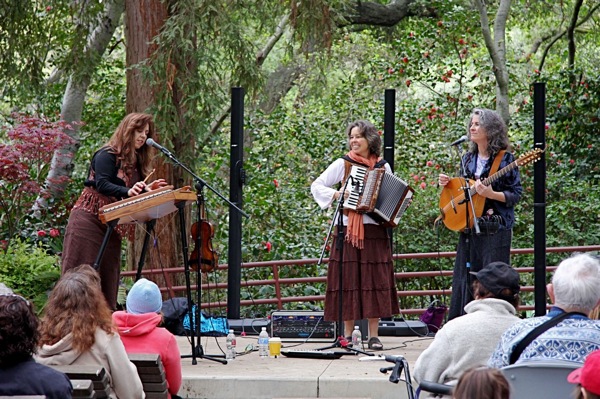Hammered Dulcimer
Plugging a Hammered Dulcimer into the L1 Model I Power Stand
For those of us who love acoustic instruments plugged in, yet have no pre-set waiting to greet us in the L1 Model I list, plugging direct into the L1® Model I may pose a special challenge. Such is the case with hammered dulcimer (HD) with built-in pickup. The HD plugged direct amplifies not only the dulcet notes, considerable ring, and harmonic range, but the 'thunk', i.e. percussive noise of the hammers as well.
While a hint of 'thunk' is natural to the instrument, a persistent, atonal 'THOK THOK' can rather get on one's nerves. Also, in the spirit of sound reinforcement, we want to make the most of the airy, ethereal qualities of a fine instrument of wood and steel.
Short of a L1® Model I or T1 ToneMatch Audio Engine preset to address the issue, this article presents an outboard gear solution that has worked for several years now for our band, an acoustic Celtic trio. Since our HD player also plays fiddle with an attached microphone, we applied the same set of gear to that as well.
In a 4 space SKB x-rack (shallow), I put in top-down order:
- ART dual preamp
- DBX dual 15-band EQ
- DBX dual compressor/limiter
- Furman power conditioner
In back (inside the box), the preamp's dual audio outs (one per side, i.e., one out for the fiddle, one for the HD) are plugged into the inputs of the dual EQ, whose outputs are in turn plugged into the inputs of the dual compressor/limiter, whose outputs go direct to Channels 3 and 4 on the L1® Model I power stand. The three units' power cords are plugged into the Furman, so there is but one power cord to plug in to our band power strip (next to to the L1®'s, of course).
Plugging in and gain/output: In front, the musician plugs the HD into the 'HD side' of the dual preamp. Generally, gain and output are set at about 3 o'clock. A good whack on a loud note on the dulcimer will send the gain needle jumping to the red now and then, with no clipping.
Settings for EQ and compression: EQ settings for the HD can vary a bit with each gig, though they are generally close to what is pictured. The notch to remove the 'THOK' is readily apparent and never changes. What most needs adjusting is the high end, e.g., to enhance 'airiness', or smooth harsh highs. Between 2.5k and 6.3k there is a special tonal range that bears checking each time; it can make the difference between a flat, even 'snarky' sound, and a more open, natural acoustic sound.
We hope one day there will be a preset to make this gear superfluous, and load-in that much easier. But until then, this little rack setup makes the most of our HD/fiddle player's Bose Model I!
- A note regarding those occasions where we must play through house systems: another benefit to this setup is its portability. Gone are the days of long sound checks, because now we have our sound check in a box! Typically, the sound person will request that we reduce the gains on the preamps, usually to 12 o'clock.
Two photos below show 1) the initial settings on the rack gear, and 2) gear in use at a Banshee in the Kitchen gig.

